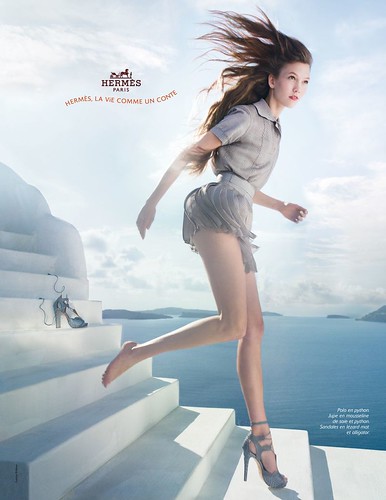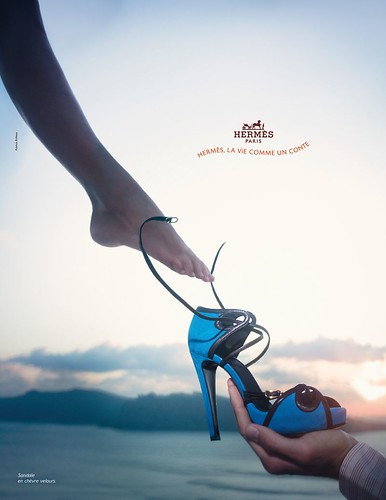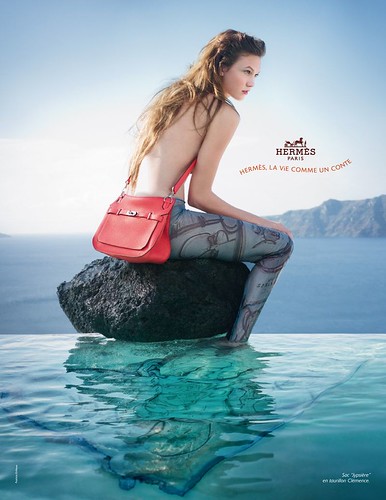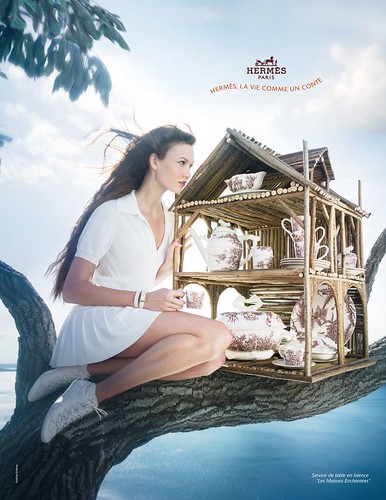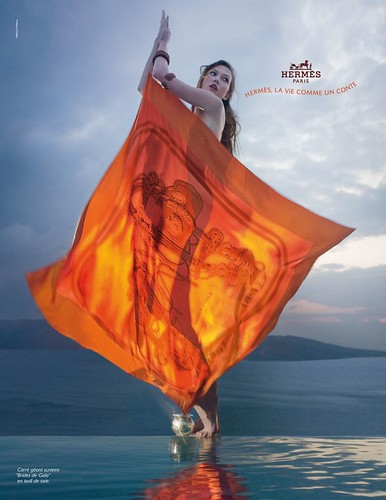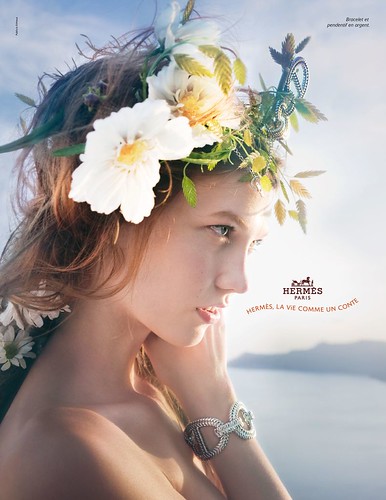
Tomorrow it’s the Universal Children's Day and to support it, on Facebook everybody is changing their profile picture into what used to be their favorite cartoon growing up.
What started as a link of an obscure Facebook page went hugely viral in just a few days and some estimate that around 500 000 people have changed their profile pictures into Disney princesses, Looney Toons and manga heroes. I personally am Bugs Bunny. The “I’ve just eaten/scratched my head/look at my vacation pictures” usual mind-numbing boring Facebook updates have now a common topic that is both nostalgic and escapist.
The immediate and enthusiastic way people have responded by changing their profile picture has made me think of the Hermès’s 2010 ad campaign "Life as a Tale", shot by the Italian photographer Paolo Roversi which has many references to fairy tales and popular films.
In Hermès’s spring/summer ads with a background of infinite sky above a tranquil deep blue sea, model Karlie Kloss calls to mind Cinderella whilst she is losing her sandal on the whitewashed steps of a Greek Island, sits on a rock watching the sea like Andersen’s Little Mermaid in Copenhagen, or has a silk scarf braided in her hair that hangs down like Rapunzel’s.
The tree house recalls Alice in Wonderland and a gorgeous orange scarf comes out of Alladin’s lamp with Kloss as the genie. The photo of Kloss with flowers in her hair has made me think of Michael Whelan’s Summer Queen.
Summer Queen by Michael Whelan.
For the autumn/winter campaign Roversi shot models Constance Jablonski and Jonas Mason in dark, misty, moonlit streets with references to Zorro’s adventures and Sherlock Holmes’s mysteries. Anticipating Christmas, a carriage full of orange packages mysteriously escapes without a driver.
The use of well-known fairy tale motifs and films that the viewer can immediately identify makes the campaign very effective. Due to the limited time a viewer spends on a magazine page or the few-minutes length of a tv-spot, the faster an advertising message is understood the better. So by tapping from folklore and fairy tale themes, the foundation onto which the advertising message is built is already there in the viewer's imagination and memory.
In Hermès’s campaign, Paolo Roversi’s imagery is so pervasive that the viewer is able to ignore the scarves’ hundreds of dollars price and just be enchanted by the photographs and dream for a moment of a happy ending fairy tale or feel the thrill of a midnight mystery.
So even if our childhood symbols are used for commercial purposes, sometimes the results are great and some commercials provoke an emotional response even if you know they are there just to sell you stuff. Sometimes advertising is art DESPITE itself.
Photographs by Paolo Roversi. Hermès 2010 print ad campaign.
Summer Queen by Michel Whelan.

